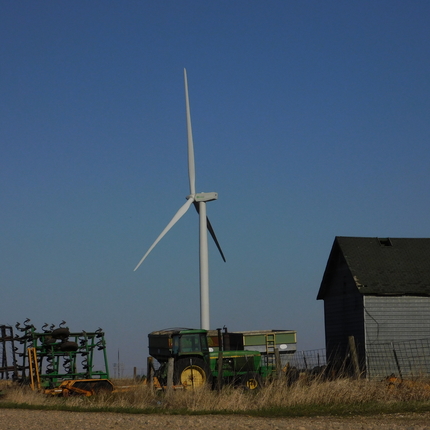When it comes to economic development tools, wind energy has paid off for rural areas. Whether it be new employment opportunities, additional revenue for counties, or direct payments to landowners, wind energy has brought significant benefits to rural communities. However, any kind of new development comes with concerns. One frequent concern voiced by local residents is what effect, if any, the presence of a wind farm may have on their property values. While there are many anecdotes about potential effects, there are several studies that have examined how wind farms may affect property values.
The most recently updated study by the Lawrence Berkeley National Laboratory, completed in 2013, used data collected from the sale of more than 50,000 homes in 27 counties, located in nine different states. These homes were within 10 miles of wind projects, with 1,198 sales within one mile and 331 within half of a mile. This study also used data from before the announcement of a project; the post-announcement, pre-construction period; and the eventual operation of the project. The study found no evidence of an effect on prices of homes in proximity to wind turbines throughout these periods.
While wind farms appear to have no notable effect on property values, siting remains an important piece of wind energy development. Developers, along with county and local community officials, must identify ways to address concerns and mitigate impacts from new development, while allowing landowners to host wind turbines, if they choose to.
A good first step is to identify questions and concerns of local residents, most often through public meetings that bring together stakeholders to discuss potential projects and share information. These meetings can also offer an opportunity for county officials to gather input from local residents to inform decisions about local regulations, and for developers to answer questions and use feedback to make adjustments to projects.
Careful siting and fair, well-informed standards also help ensure that other local concerns can be avoided or mitigated. Rural communities can work together, and with developers, to make wind energy projects better, and continue to reap the benefits of new renewable energy.
Fact Sheet: Wind Energy and Property values
These report findings are compiled in a fact sheet, “Wind energy and property values,” released last month by the Center for Rural Affairs. Author Lu Nelsen provides recommendations for wind project developers, rural communities, and landowners to facilitate a more efficient development process. The fact sheet can be found online at cfra.org/publications/WindEnergyAndPropertyValues.





